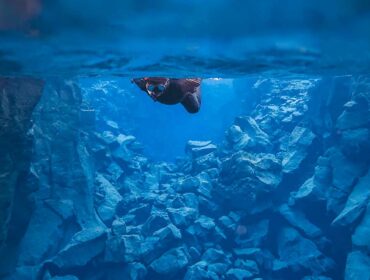One of Europe’s hottest holiday destinations, the Canary Islands is definitely one of the best scuba diving spots of the continent. Located off the coast of Morocco, the volcanic Spanish Islands offer a host of beautiful scenes both above water and below. But, it’s the below water we’re more concerned about.
The volcanic nature of the Canary Islands is responsible for some very impressive rock formations underwater and an array of dive sites including, reefs, drop offs, swim throughs and caves rich in both plant and animal life. Many say it puts diving in the Mediterranean to shame. Of the 7 islands that make up the Canaries, Gran Canaria and Tenerife are the most popular scuba diving destinations, however each island has dive sites of their own, worth diving too.
Gran Canaria
Most of this island is surrounded by a shelf at about 20-24m deep and offers a number dive sites accessible from the shore. On the east coast of the island is the Arinaga Marine Reserve better known as ‘El Cabrón’, where divers most dive shops and divers are found. This area has earned the reputation of having the best diving of the islands because of the variety and sheer quantity of marine life it has on offer. The abundance of marine life that includes schools of barracuda, sardines, damselfish, wrasses, parrotfish, rays and gorgonias is accompanied by the stunning seascapes which include natural arches, tunnels, swim throughs and cliffs.
The dives at the reserve are relatively easy at depths of around 15-20 meters (50-65 feet) and visibility also good throughout the year. However, it’s best to plan ahead as there aren’t any facilities (toilets, water, cafes etc.) at the access points to the water which is quite literally a off a dusty track.
Boat accessible dive sites are scattered all around the island. Las Palmas, in the North East has one of the best wreck diving of the region. The Pasito Blanco natural & artificial reefs are 2-5 kms from shore off the southern point of the island. A thriving reef rich marine life is always a pleasure to dive. The artificial reef has been created on a sandy sea bed by dropping several artificial structures including blocks, tubes and concrete ‘skeletons’, but shows promise with fish like roncadors, barracudas and species of rays moving in already. The Arguineguín Reef is another place to spot schooling fish in their perfect formations swimming around and sometimes even surrounding you.
La Catedral Lying just outside Las Palmas is a cavern dive down that descends to an amazing 45m, with light streaming in through entry points above in the roof. A truly spectacular site, for the more experienced ofcourse as they can often be a swell running through.
Tenerife
The largest of the Canary islands and the most popular, Tenerife also happens to be very impressive diving destination. From wrecks, caves, rolling walls, drop off reefs, this island has it all and never disappoints. Most dive sites are a short 15-20 minute boat ride from shore, and cater to all levels of divers visiting. From the Condesito shipwreck which is intact and in good condition, teaming with life to ‘Step’ or Los Escolones a wall dive which your tropical reef fare, the marine life is rich, visibility clear and photo ops plentiful, making it a divers delight.
The Rays or Los Chuchos is a must visit site when in Tenerife with its crisp blue waters that descends to a rich golden sandy floor teeming with 5 different species of Ray, and a small wreck at the center of the site.


